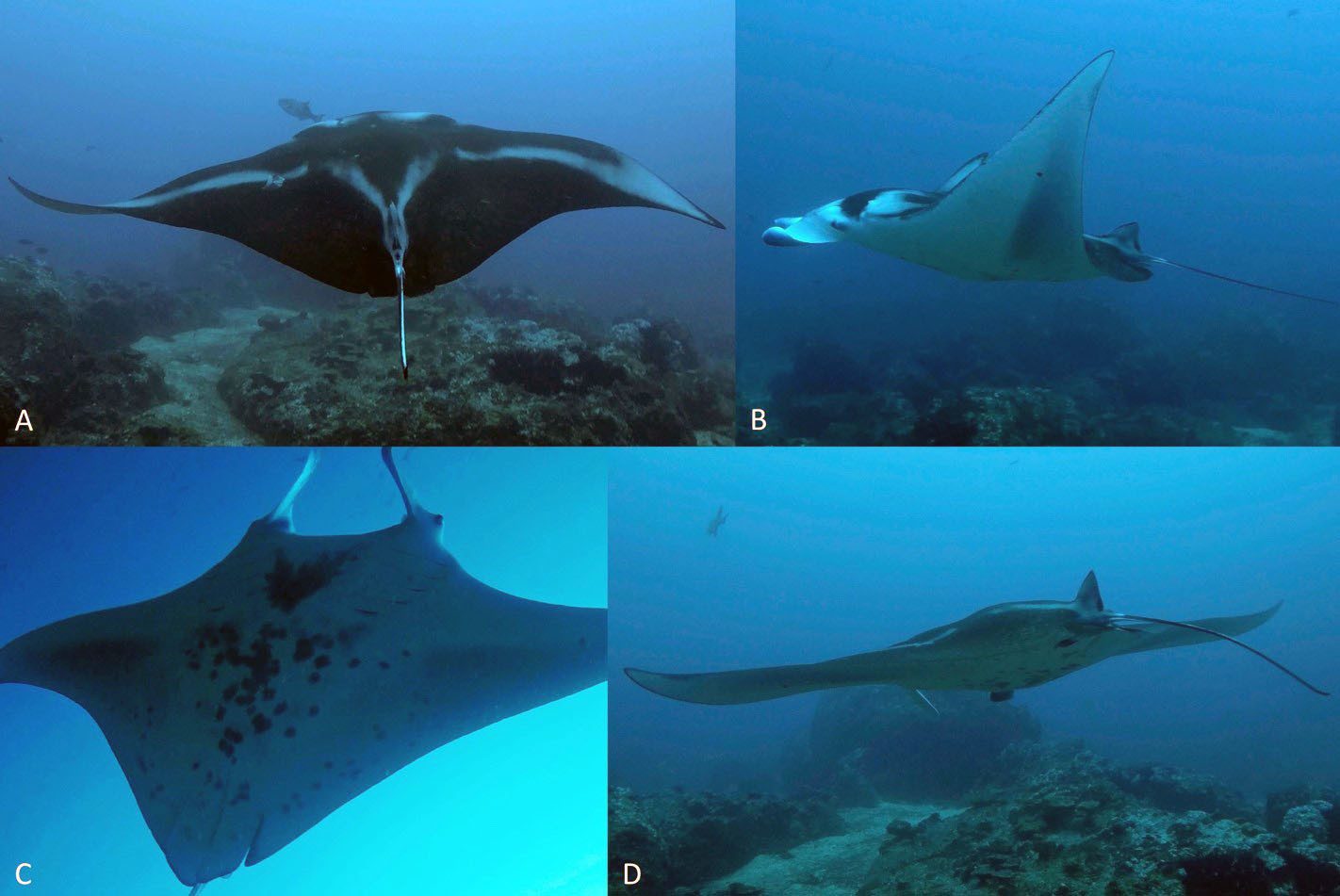A pregnant reef manta ray, a species associated purely with coastal waters, has been encountered for the first time far from any mainland – at remote Cocos Island in the eastern Pacific.
Reef mantas (Mobula alfredi) grow up to 5m, are often found in shallow habitats and tend to be residential. It is giant mantas (Mobula birostris) that have been recorded travelling vast distances, though how and why they make their journeys remains unknown.
The 3.5m reef manta was spotted last September some 3700 miles east of the nearest confirmed sighting location, in French Polynesia’s Marquesas Islands. Such a journey would represent the longest recorded straight-line distance travelled by any manta species.
The longest previous known journeys occurred along continental coastlines in Australia (400 miles) and Mozambique (310 miles).
21 March 2019
The sighting, which was also the first of a reef manta on either side of the American continent, is the subject of a new study by a team of marine biologists from the USA (Marine Megafauna Foundation and Fins Attached), Mexico (Pelagios Kakunja) and Costa Rica (CREMA).
“I have been studying mantas for 16 years and they still constantly surprise me,” said Dr Andrea Marshall, MMF co-founder and principal scientist. “This extraordinary sighting challenges everything we currently know about the migratory behaviour of this species and its ability to undertake long-distance movements across open-ocean environments.”
Manta rays give birth to a single pup every 2-5 years, making them one of the slowest reproducing elasmobranch species in the world. No-one has ever witnessed a manta give birth in the wild, but it was thought possible that the Cocos specimen would pup at the location.
The team fitted the manta with an acoustic tag, and initial data revealed that she had remained in the area. Listening stations deployed around other remote sites such as Malpelo or the Galapagos will alert the researchers if she moves to those locations.
“It will be interesting to monitor her over the coming months and see how she uses this new, unfamiliar habitat,” said Marshall. “If she adjusts well to the conditions, it begs the question: why do reef mantas not ordinarily live in this part of the ocean?
“While unlikely, we also cannot ignore the possibility that small populations of reef mantas may in fact exist in the eastern Pacific and have just gone undetected.
“Perhaps most importantly, this research also provides tantalising clues to how reef mantas may have so prolifically colonised the remote islands and archipelagos of the Indian Ocean and South Pacific.”
The report is published in Marine Biodiversity Records.


